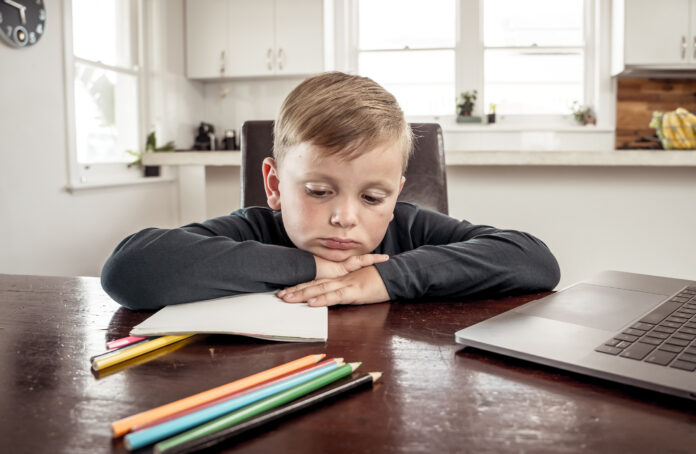According to the Burbio school tracker, 53 percent of schools nationwide are now fully open for business. With the new CDC guidelines having determined that three feet is a safe distance for students, one would think the other 47 percent would embrace the chance to follow suit.
But teacher union leaders, including Randi “Follow the Science” Weingarten aren’t having any of that. The leader of the American Federation of Teachers is “not convinced” by the new guidance. There is also no buy-in from the National Education Association, which hemmed and hawed in a press release about reserving judgment until they could review “the new studies that were presented.”
Neither union or any shutdown hawk bothers to explain why schools in densely populated areas of Florida and Catholic schools across the country are fully open and not spreading Covid. In fact, the CDC has concluded that other adults, not children, are the primary source of exposure to the virus.
With some schools shutdown for over a year – many of them in California – the devastation to children is immeasurable. Of course, some union leaders and their acolytes refuse to acknowledge this tragedy. Chief union toady Diane Ravitch, who is wrong about, well, everything, recently implored her readers in a vapid blog post not to believe the “learning loss hoax.”
Back in the real world where facts matter, an analysis of 70 million 10-year-olds worldwide shows that “11.5 million of them could be unable to read as a direct result of the impact on education of the Covid pandemic.” Additionally, a recent poll of American parents reveals that more than 40 percent say their kids have fallen behind in school during the lockdowns, and, even worse, they “lack interest in classes.”
The whole mess is best summed up in an extraordinarily moving blog post written by Darren Miller, a veteran high school math teacher in the Sacramento area, and force behind the “Right on the Left Coast” blog. He returned to teach full time in person on March 22nd, and wrote the following one day later:
After 2 days back at work this week, I’ve now taught each of my 5 classes in person for the first time in over a year. Without going into details about my district’s exceedingly-flawed hybrid model, suffice it to say that I taught each class twice–once in the morning for in-person students and once in the afternoon for online students. My in-person classes ranged anywhere from 5-10 students each.
I’d like to focus on one of my classes in particular, which I didn’t teach until today. This is a higher math class of almost exclusively college-bound students.
I’d previously notified my students that, with the hybrid model, our class time was significantly less than it had been under all-online classes, 50 minutes vs 90 minutes. Therefore, it was incumbent upon them to watch my instructional videos before class and take whatever notes they thought were necessary, because with only 50 minutes of class we’d need to get right into practice problems.
Not one of them had watched the video for today’s class.
I wasn’t going to reteach the material in the video, so I would incorporate as much “instruction” as I could while we worked out problems. Not long after I started in, I stopped.
They were just staring at me.
“Are any of you going to write any of this down?” A few reached for pencils and notebooks. I continued my instruction. As I’m wont to do when teaching, I frequently stop and ask questions to check for student understanding. And so I did. I asked a student a question.
The student just stared at me.
I looked at the student for a moment and then said, “You realize I can see you, right? You’re not hiding behind a screen with your camera turned off.” I said it with a hint of humor, but the dark truth is there – these kids have no idea how to be students. They have completely forgotten.
Yes, I know that 374 days had passed since the last time they were in school. But these college-bound students had been in school for several years before those 374 days. None of these students is a freshman.
They have forgotten how to be students.
This partly explains their low grades. They don’t engage – they turn off their cameras (I cannot require them to turn them on), they don’t ask questions, they don’t really take notes. They listen to my videos–at least, they did when I played them during class–and they listen to me talk and explain. They don’t do anything, they sit and listen and let the words flow over and around them. They learn only what they hear and remember, which cognitive science will tell you won’t be much. They are completely passive, there is nothing active at all about their learning.
Miller is not alone. He spoke with one of his school’s vice principals, and learned that several other teachers had reported the same phenomenon. When talked to, the students “just stared.”
Miller concludes his post: “I have no idea if they’ll get back to “normal” any time soon or not. If they don’t, though, we have a much bigger problem on our hands than so-called learning loss. This could be nightmarish.”
Nightmarish is not an exaggeration. Thanks largely to the teachers unions and their mandated lockdowns, our children could be devastated for years to come, perhaps permanently.
[Originally posted at the California Policy Center. Republished with permission.]








